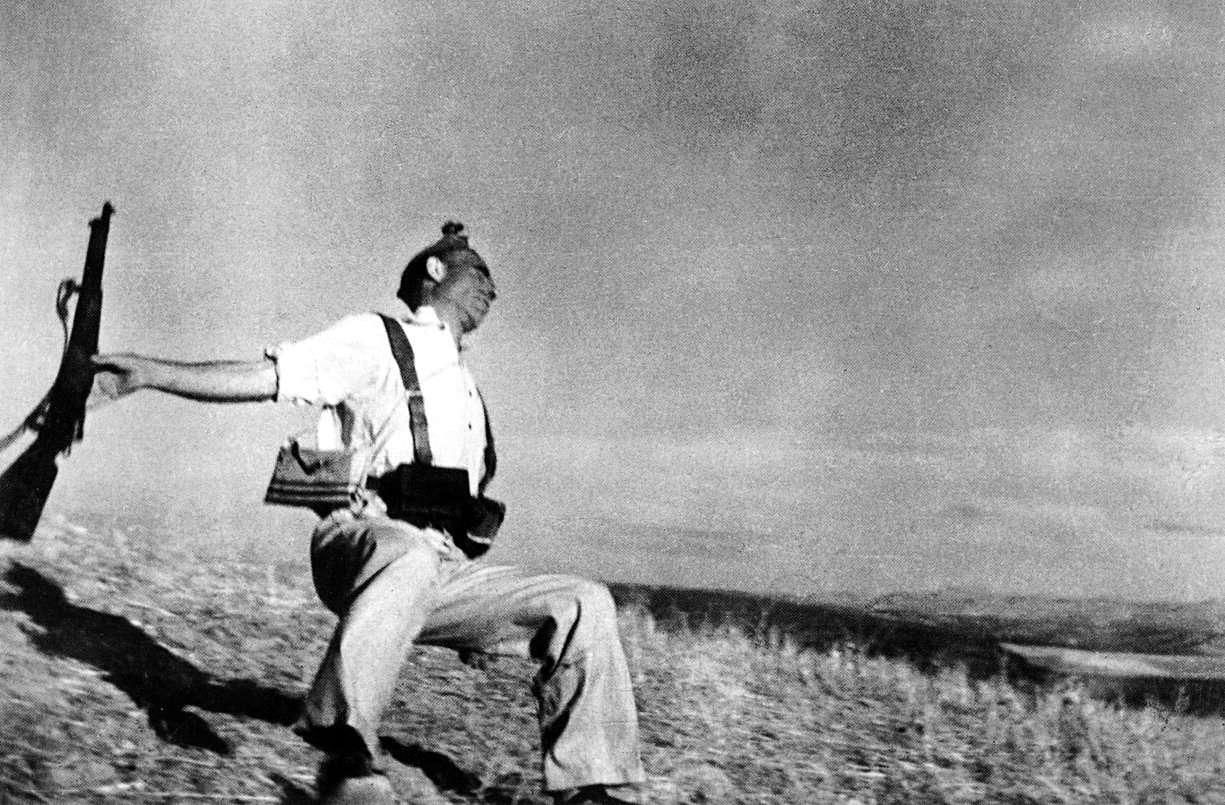He used the Leica camera which was the first instant camera with the view finder on the side so you could see your surroundings and wait for the perfect moment to capture your image, this camera was the pinacle of modern photography for the time it was made the Leica was ahead of it's time and very expensive.
Photojournalism is the art or practice of communicating news through photographs, this can be seen in the picture to the left because at the time it was taken this was seen as news for the world.
Photojournalism is very different from other forms of photography such as fashion photography because it captures and documents real events which is what describes the photo to the left best it captures a real moment in life; a decisive moment of a man jumping over a puddle which people would later look at as a defining time of the world jumping into the unknown which was the world war.
Tony Vaccaro - Vaccaro was was a soldier in the front line of U.S army in World War 2 he was also a photojournalist, his work is known because he captured images of the aftermath of the war. He was in the 83rd Infantry Division and took part in the Normandy landings armed with an M-1 rifle and an Argus C-3 camera. Vaccaro said his aproach was "I said to myself: Tony, don’t worry about how good the picture is going to be under difficult conditions and light. Take it, no matter what. If the eye sees it, take it.” This however would not benefit Vaccaro when some of his pictures were not accepted by newspapers and magazines because they showed U.S soldiers dead/dying.
Tony Vaccaro was a very well known photo journalist for capturing what people couldn't see happening in the war, he released some of his pictures in Flair magazine even though near 4,000 of them were destroyed in an accident in 1948.
Vaccaro didn't enjoy taking staged photographs, he tried to get things in their natural state, when Tony Vaccaro was invited to have an audience with Pablo Picasso he told Picasso that his camera was broken and captured him when he was not ready.


Robert Capa - Capa was another combat photographer just like Vaccaro except his photographs had more of a unique impact, Capa documented several different wars like the Spanish Civil War, World War 2 and the second Sino-Japanese War. What made Capa's photographs so unique was that he took pictures at a decisive moment which gave them more of an impact when seen. Robert Capa took the skills he had with taking decisive pictures and produced famous photographs such as the Spanish soldier being shot and the most famous one of them all, the American G.I's raising the flagon D-Day.


